Rank Species | Genus Ambrosia Higher classification Ragweed | |
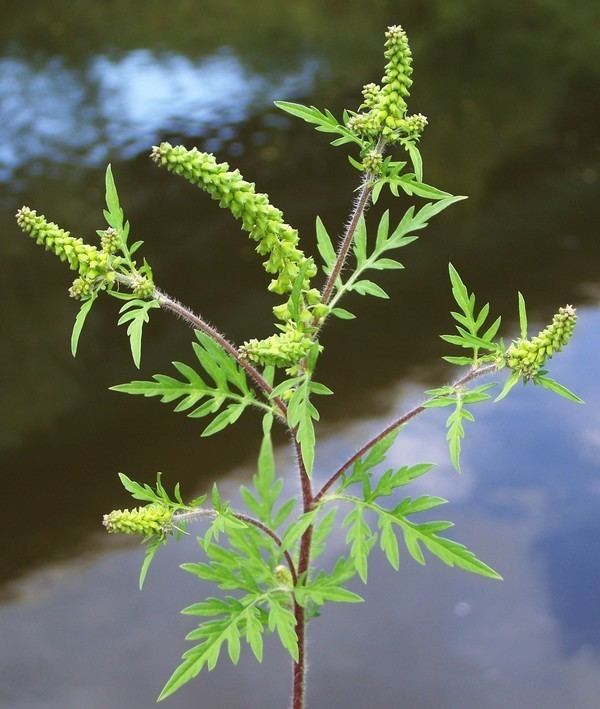 | ||
Similar Ragweed, Ambrosia trifida, Mugwort, Solidago canadensis, Lamb's Quarters | ||
Hay fever goldenrod solidago sp vs ragweed ambrosia artemisiifolia
Ambrosia artemisiifolia, with the common names common ragweed, annual ragweed, and low ragweed, is a species of the genus Ambrosia native to regions of the Americas.
Contents
- Hay fever goldenrod solidago sp vs ragweed ambrosia artemisiifolia
- Alsemambrosia ambrosia artemisiifolia 2016 08 15
- Taxonomy
- Distribution
- Description
- Invasive species
- Ragweed control
- Medicinal
- Phytoremediation
- References
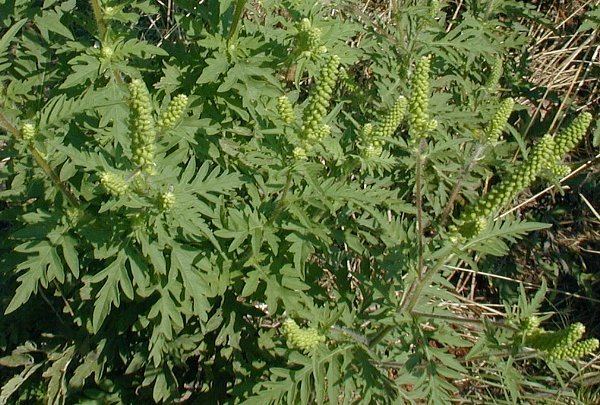
Alsemambrosia ambrosia artemisiifolia 2016 08 15
Taxonomy
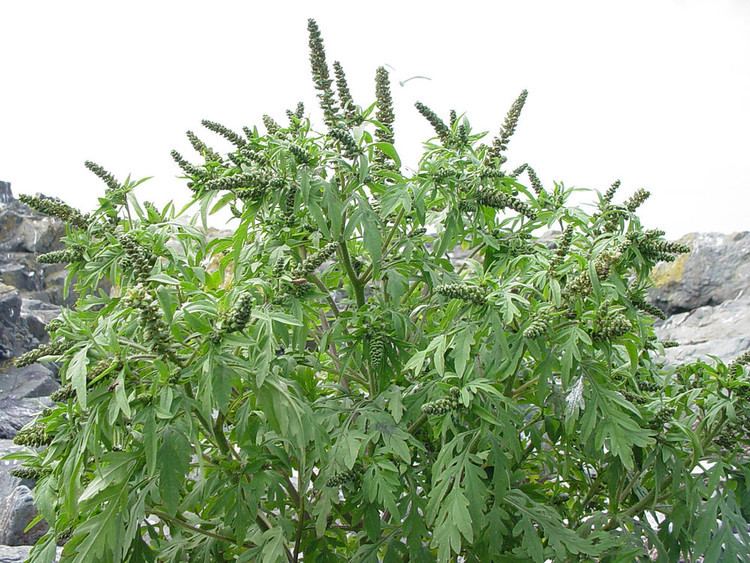
The species name, artemisiifolia, is given because the leaves were thought to bear a resemblance to the leaves of Artemisia, the true wormwoods.
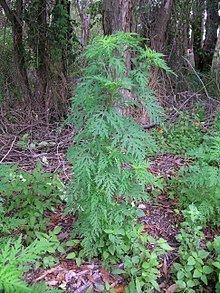
It has also been called the common names: American wormwood, bitterweed, blackweed, carrot weed, hay fever weed, Roman wormwood, short ragweed, stammerwort, stickweed, tassel weed.
Distribution
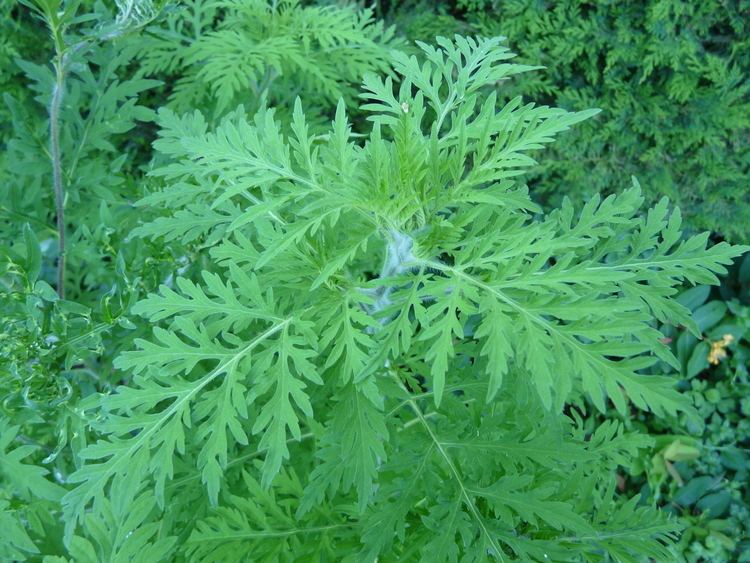
The plant is native to: North America across Canada, the eastern and central United States, the Great Plains, and in Alaska; the Caribbean on Cuba, Hispaniola, and Jamaica; and South America in the southern bioregion (Argentina, Chile, Paraguay, Uruguay), the western bioregion (Bolivia, Peru), and Brazil.
It is the most widespread species of the genus in North America, which most of the other species of Ambrosia are endemic to.
Description
Ambrosia artemisiifoliais an annual plant that emerges in late spring. It propagates mainly by rhizomes, but also by seed.
It is much-branched, and grows up to 7 decimetres (2.3 ft) in height. The pinnately divided soft and hairy leaves are 3–12 centimetres (1.2–4.7 in) long.
Its bloom period is July to October in North America. Its pollen is wind-dispersed, and can be a strong allergen to people with hay fever.
It produces 2–4 mm obconic green to brown fruit. It sets seed in later summer or autumn. Since the seeds persist into winter and are numerous and rich in oil, they are relished by songbirds and upland game birds.
Invasive species
Common ragweed, Ambrosia artemisiifolia, is a widespread invasive species, and can become a noxious weed, that has naturalized in: Europe; temperate Asia and the Indian subcontinent; temperate northern and southern Africa and Macronesia; Oceania in Australia, New Zealand, and Hawaii; and Southwestern North America in California and the Southwestern United States.
Common ragweed is a very competitive weed and can produce yield losses in soybeans as high as 30%. Control with night tillage reduces emergence by around 45%. Small grains in rotation will also suppress common ragweed if they are overseeded with clover. Otherwise, the ragweed will grow and mature and produce seeds in the small grain stubble.
Ragweed control
As of 2005 several herbicides were effective against common ragweed, although resistant populations were known to exist. In 2007 several Ambrosia artemisiifolia populations were glyphosate resistant, exclusively in the USA.
As of 2014 the ragweed leaf beetle, Ophraella communa, has been found south of the Alps in southern Switzerland and northern Italy. Many of the attacked plants were completely defoliated.
SMARTER is a European interdisciplinary network of experts involved in the control of ragweed, health care professionals, aerobiologists, ecologists, economists, and atmospheric and agricultural modellers.
Medicinal
Ambrosia artemisiifolia was a traditional medicinal plant for Native American tribes, including the Cherokee, Lakota, Iroquois, Dakota, and Delaware.
Phytoremediation
Ambrosia artemisiifolia is used in phytoremediation projects remediating soil pollution, for removing heavy metals such as Lead from contaminated soil.
